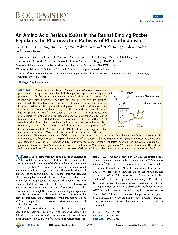摘要
Phoborhodopsin from Halobacterium salinarum (salinarum phoborhodopsin, spR also called HsSR II) is a photoreceptor for the negative phototaxis of the bacterium. A unique feature of spR is the formation of a shorter wavelength photoproduct, P480, observed at liquid nitrogen temperature beside the K intermediate. Formation of similar photoproduct has not been reported in the other microbial rhodopsins. This photoproduct showed its maximum absorbance wavelength (lambda(max)) at 482 nm and can thermally revert back to spR above -160 degrees C. It was revealed that P480 is a photoproduct of K intermediate by combination of an irradiation and warming experiment. Fourier transform infrared (FTIR) difference spectrum of P480 from spR in C-C stretching vibration region showed similar features with that of K intermediate, suggesting that P480 has a 13-cis-retinal chromophore. The appearance of a broad positive band at 1214 cm(-1) in the P480-spR spectrum suggested that configuration around C9=C10 likely be different between P480 and K intermediate. Vibrational bands in HOOP region (1035 to 900 cm(-1)) suggested that the chromophore distortion in K intermediate was largely relaxed in P480. The amount of P480 formed by the irradiation was greatly decreased by amino acid replacement of S201 with T, suggesting S201 was involved in the formation of P480. According to the crystal structure of pharaonis phoborhodopsin (ppR), a homologue of spR found in Natronomonas pharaonis, S201 should locate near the C14 of retinal chromophore. Thus, the interaction between S201 and C14 might be the main factor affecting formation of P480.
- 出版日期2011-8-23
